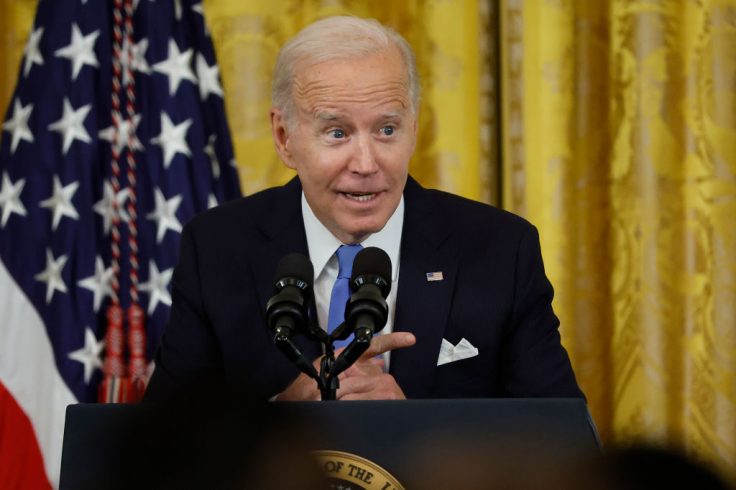President Joe Biden's quiet admission that the full cost of his student debt cancellation scheme will be included in the 2022 fiscal year budget—and that it will be and financed entirely by debt—is a reckless budgetary gimmick and a "great error," according to economists from across the political spectrum.
A senior Biden administration official told the Wall Street Journal on Tuesday that the loan forgiveness program—which the White House estimates will cost $379 billion, but could be more depending on the number of eligible people who apply for the relief—will be added to the 2022 fiscal year budget without any payment mechanism.
"My cynical answer is they did it this way so next year they can say the deficit is lower," economist Marc Goldwein of the center-left Committee for a Responsible Federal Budget told the Washington Free Beacon. "If instead they put it in the 2023 fiscal year, it would look more obvious that they’re increasing the deficit."
The 2022 fiscal year ended Sept. 30. No payments have been made to the program, which begins in the new fiscal year, on Oct. 17.
Moreover, the program, which forgives up to $20,000 in student debt for qualifying applicants, will take place over the course of roughly three decades, according to the Education Department—but the entire cost will be born in a single fiscal year, a budgetary maneuver likely intended to boost the Biden administration’s misleading talking point that it’s overseeing falling deficits.
Biden regularly boasts about cutting the federal budget deficit—which increases when the government spends more than it collects in tax revenue—and claims he’s more fiscally responsible than Republicans. The U.S. budget deficit was $2.8 trillion in the 2021 fiscal year and initially just over $1 trillion in the 2022 fiscal year before the added cost of student debt cancellation.
By tacking on the cost of student debt cancellation to the 2022 fiscal year budget, Biden can still assert the deficit is falling. Should spending otherwise remain constant in the 2023 fiscal year, the deficit would be just over $1 trillion. But adding the cost of student debt cancellation in the 2023 fiscal year would cause the deficit to balloon to $1.4 trillion. Biden would then be unable to claim that he's decreasing the deficit.
The White House did not respond to a request for comment.
No matter where the cost of student debt cancellation is allocated, the move puts further strain on the United States’ fiscal health. Student debt cancellation will increase the country's total national debt to $31 trillion.
Economists on both the left and right agree that Biden’s plan will make inflation, which sits at historically high levels, worse. Giving more money to consumers via debt relief increases demand in an already overheated economy. "This is a great error particularly when added to the cumulative fiscal deficit of 2020-21," Harvard University economist Robert Barro, one of the nation's leading macroeconomists, told the Free Beacon, referring to the extraordinary amount of deficit spending during the COVID-19 pandemic. "It will, for example, add to inflationary pressure."
The move also puts further pressure on the Federal Reserve, which is in charge of adjusting interest rates to control inflation. Juicing the economy with more consumer spending from student debt relief would increase the chance the central bank miscalculates its interest rate hikes and plunges the economy into a deep recession.
Although the Biden administration estimates the cost of student debt cancellation is under $380 billion, outside estimates say it could be much larger. A study from the Wharton business school at the University of Pennsylvania found the price tag could be nearly $520 billion.
The White House has already adjusted the parameters of the program to only include borrowers whose debt is held by the federal government, not private lenders. Further adjustments could be made down the road, meaning the true cost is unknown until the conclusion of the program.
In the long term, Biden’s spending spree could result in painful economic decisions such as dramatically slashing government programs. As interest rates rise due to inflation, the cost of borrowing has skyrocketed.
That means servicing the debt used to pay for programs such as student debt cancellation is more expensive than it would have been pre-pandemic. Rising debt payments can happen quickly: U.S. interest payments on debt totaled $63 billion in August, compared with $34 billion in January because of rising interest rates.
"Student debt cancellation is adding to the deficit at a time that we need to actually slow down spending," George Mason University economist Veronique de Rugy told the Free Beacon. "The time of forever going down interest rates, at least for now, is over. And people are behaving like that’s not the case."
